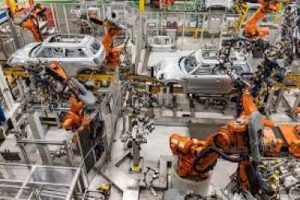Manufacturing grows at its slowest pace for three months

MANUFACTURING grew at its slowest pace for three months in December, according to latest figures.
The national Markit/CIPS UK manufacturing PMI fell to 51.9 in December, down from 52.5 in November.
While any figure over 50 indicates growth, Markit concluded the performance represented a disappointing end to 2015 for the sector.
Commenting on the PMI announcement, Lee Hopley, Chief Economist at EEF, the manufacturers’ organisation, said: “December’s PMI reading points to manufacturing ending 2015 with neither a bang nor a whimper. Activity levels appear to have been holding up in line with the long-run average as output and new orders tick over, and no more.
“With the CIPS report confirming our view that manufacturing output is likely to be flat over 2015 as a whole, the question now is whether the sector can regain much needed momentum in 2016.
“Industry PMI readings from Europe offer a few reasons for optimism that a recovery across the region will finally start to benefit UK exporters, but further weakening in China is likely to be a counteracting force into 2016.”
Mike Rigby, Head of Manufacturing at Barclays, agreed that 2015 had been a challenging year for the sector as manufacturers sought to remain competitive and hold their profit margins.
“With export orders, hampered by the strength of sterling and a sluggish Eurozone, only recently showing signs of improvement, domestic demand continues to be the main driver of growth. As we enter 2016, vital investment, differentiation of products on quality/service and a firm eye focused on costs should be top of manufacturers’ New Year resolution lists.”
Rob Dobson, Senior Economist at Markit, said: “The UK manufacturing sector ended 2015 on a disappointing note, with its rate of growth slowing further from October’s recent high back down towards the stagnation mark. This suggests that industry will make, at best, only a marginal positive contribution to broader economic growth in the final quarter of the year.
“Although this would be an improvement on the second and third quarters, it does also suggest that manufacturing output over 2015 as a whole may be below the level achieved in 2014. With the latest revisions to official data also suggesting that GDP growth earlier in the year was softer than previously thought, the emphasis has really shifted to other sectors of the economy if the rate of expansion for the year as a whole is to come in close to the OBR forecast as outlined in the Autumn Statement.
“The December manufacturing PMI data also suggests that cost pressures remain heavily on the downside and this is driving modest reductions in average factory gate selling prices. If this ongoing mix of subdued growth and weak price pressures remains prevalent elsewhere in the economy, the Bank of England will likely continue to push any potential rate increase later into 2016.”








